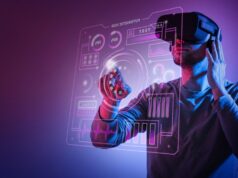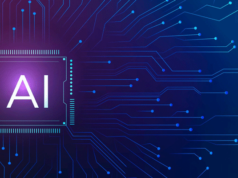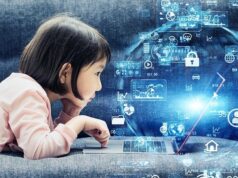AI-Powered Creativity: Exploring the Intersection of Art and Technology
For a really long period, the domains of art and technology have existed distinctly, representing human creativity and mechanical exactness, individually. For any situation, the fast progression in artificial intelligence (AI) is dismantling these long-laid-out divisions, marking the beginning of a shrewd time of creativity moved by AI. This exploration dives into the intriguing convergence of art and technology, unveiling the transformative impact of AI on artistic expression and the inception of innovative AI-generated art
AI-Generated Art: A Canvas Unveiled by Algorithms
AI-generated art, a result of the coordinated effort among algorithms and creativity, stands as a demonstration of the evolving connection amount technology and artistic expression. Machine learning, a subset of AI, assumes a significant part in this landscape, allowing PCs to examine immense datasets and learn designs, at last generating extraordinary and compelling artworks.
Machine Learning in Art: Unleashing the Power of Algorithms
The infusion of machine learning into the art world has opened exceptional potential outcomes. Artists and technologists the same are leveraging machine learning algorithms to dissect verifiable art information, understand artistic styles, and even duplicate creative interaction. This collaboration has prompted the formation of artworks that flawlessly mix custom with innovation.
Creative AI Applications: Redefining Artistic Boundaries
The integration of AI in the creative cycle goes past simple replication, extending to the redefinition of artistic limits. Creative AI applications empower artists to investigate novel forms of expression, providing apparatuses that expand and upgrade human creativity. From picture and music age to interactive installations, AI has turned into a partner in the artist’s tool stash, pushing the restrictions of what is possible in the domain of art.
Technology and Artistic Expression: A Symbiotic Relationship
The association among technology and artistic expression has formed a helpful dynamic, with each influencing and enriching the other. Technological instruments empower artists to attempt various things with new mediums, techniques, and thoughts, fostering a culture of consistent innovation. Digital platforms and software designed with AI algorithms have become spaces where artists can break down, rehash, and refine their fantasies.
Digital Art Innovation: Beyond the Canvas
The presence of AI has instigated digital art into uncharted districts, expanding the definition of what art is. Digital art innovation isn’t for the most part confined to static materials; it has transcended into dynamic, interactive, and clear experiences. PC generated reality (VR) and expanded reality (AR) applications, infused with AI, offer groups a multi-material obligation to art, transforming shows into clear landscapes.
AI-Enhanced Creativity: The Human-AI Collaboration
AI-enhanced creativity addresses a change in outlook in the creative cycle. Rather than replacing human artists, AI fills in as a partner, offering insights, suggesting thoughts, and augmenting the creative excursion. This cooperative methodology encourages a one of a kind mix of human intuition and machine accuracy, resulting in artworks that resound with a combination of creativity from the two domains.
Artistic Algorithms: Decoding the Language of Creativity
Artistic algorithms are the driving force behind the age of AI-fueled art. These algorithms are designed to understand and recreate the intricate examples of human creativity. As artists input information and boundaries, algorithms interpret this information to make artworks that reverberation the elaborate subtleties of famous artists or, on the other hand, forge altogether new artistic boondocks.
Computational Creativity: Machines as Creative Thinkers
The idea of computational creativity challenges the customary thought of creativity as an only human trait. Machines, driven by cutting-edge algorithms, are presently fit for generating clever thoughts, ideas, and artistic expressions. This change in perspective prompts a reexamination of being creative, as machines develop into thinking substances equipped for contributing to the artistic talk.
Technological Evolution in Art: From Brushes to Neural Networks
The evolution of technology in art can be followed from the utilization of customary brushes and materials to the integration of neural networks and complex algorithms. This progress reflects an adjustment of devices as well as an essential change in the creative cycle itself. Neural networks demonstrated after the human brain, can break down complex examples and create art that charms crowds worldwide.
AI-Driven Artistic Exploration: Expanding Horizons
AI-driven artistic exploration is pushing the constraints of what art can achieve. Artists are at present using AI as a gadget to investigate uncharted locales, attempt various things with unusual thoughts, and challenge laid-out standards. The limit of AI to process and interpret huge proportions of information opens up new streets for artistic expression, allowing artists to exploit the total information on mankind.
Neural Network Art: Painting with Pixels and Algorithms
Neural network art addresses a combination of the natural and the digital. Neural networks, inspired by the human brain’s neural engineering, break down input information to make stunning visual pieces. The outcome is a marriage of pixels and algorithms, producing artworks that have an otherworldly, fanciful quality. Neural network art represents the capability of AI to redefine our esthetic discernments.
Innovation in Digital Design: AI as a Catalyst
In the domain of digital design, AI fills in as an impetus for innovation. Designers are leveraging AI apparatuses to streamline creative interaction, improve client encounters, and produce designs that reverberate with different crowds. From site interfaces to item packaging, AI-driven design innovations are reshaping the visual landscape and setting new standards for aesthetic greatness.
Digital Art Revolution: A Paradigm Shift
The digital art revolution, fueled by AI, suggests an adjustment of standpoint in how art is made, experienced, and regarded. Digital platforms and virtual spaces are democratizing permission to art, enabling a worldwide group to attract with various artistic expressions. The standard limits of segment to the art world are crumbling, allowing emerging artists and different voices to add to the rich weaving of human creativity.
AI in Visual Arts: Redefining Aesthetics
AI’s part in the visual arts loosens up past the formation of artworks; it is redefining esthetics themselves. Algorithms can examine gigantic datasets of visual information, perceive floats, and inform artistic decisions. This information-driven approach troubles standard thoughts of close-to-home esthetics, opening up a trade about the intersection of objectivity and creativity in the visual arts.
Creative Applications of Artificial Intelligence: A Multidisciplinary Approach
AI creative applications are not restricted to a single artistic discipline. Instead, AI is fostering a multidisciplinary approach, influencing fields as different as music synthesis, writing, and even performance arts. The flexibility of AI permits artists to investigate and try across different mediums, encouraging a cross-pollination of thoughts and procedures
Technological Advancements in Creative Industries: A Catalyst for Change
The creative industries are experiencing a seismic shift moved by technological advancements. AI is at the forefront of this transformation, driving innovation, fostering coordinated effort, and challenging laid out standards. From filmmaking to advertising, the integration of AI is revolutionizing creative cycles, enhancing effectiveness, and offering new roads for storytelling and expression.
Art and Technology Convergence: A Harmonious Symphony
The convergence of art and technology is giving ascent to an agreeable orchestra where the distinct notes of human creativity and machine accuracy mix consistently. This cooperative energy isn’t tied in with replacing one with the other however creating a discourse between human expression and computational ability. The outcome is a more extravagant, more different artistic landscape that mirrors the aggregate ingenuity of humankind and the capacities of AI.
AI for Artistic Inspiration: A Muse in Algorithms
AI is emerging as a fantasy for artists, providing inspiration and pushing the constraints of imagination. Algorithms, prepared for analyzing colossal proportions of visual and determined information, can suggest considerations, styles, and associations that streak the creative cycle. This partnership among artists and AI is transforming the genuine thought of inspiration, expanding the skylines of what artists can imagine and bring to life.
Algorithmic Artistry: Crafting Beauty with Code
Algorithmic artistry is the specialty of using algorithms to make visually captivating and adroitly rich artworks. Artists tackle the force of code to produce intricate examples, dynamic organizations, and mesmerizing visuals. This form of artistry challenges customary thoughts of initiation and invites examination on the intersection of creativity, code, and the steadily evolving nature of technology.
Digital Transformation of the Art World: A Global Renaissance
The digital transformation of the art world tends to a worldwide renaissance, transcending geological cutoff points and social hindrances. Online platforms, virtual presentations, and AI-driven art experiences are democratizing permission to art, allowing individuals from arranged establishments to attract with and add to the artistic talk. This digital renaissance indicates not simply a change of how art is made yet additionally the status quo shared, esteemed, and regarded on a worldwide scale.
Conclusion
The convergence of art and technology, driven by the force of AI, is heralding another time of creativity that rises above customary limits. AI-generated art, the integration of machine learning in artistic undertakings, and the utilization of creative AI are reshaping the artistic terrain, questioning laid-out standards, and enhancing the human experience. Amidst the digital transformation unfolding in the art world, it is obvious that the coordinated effort between human creativity and AI ingenuity isn’t simply a technological evolution but a profound reimagining of the potential outcomes of art and its reverberation with crowds universally.








